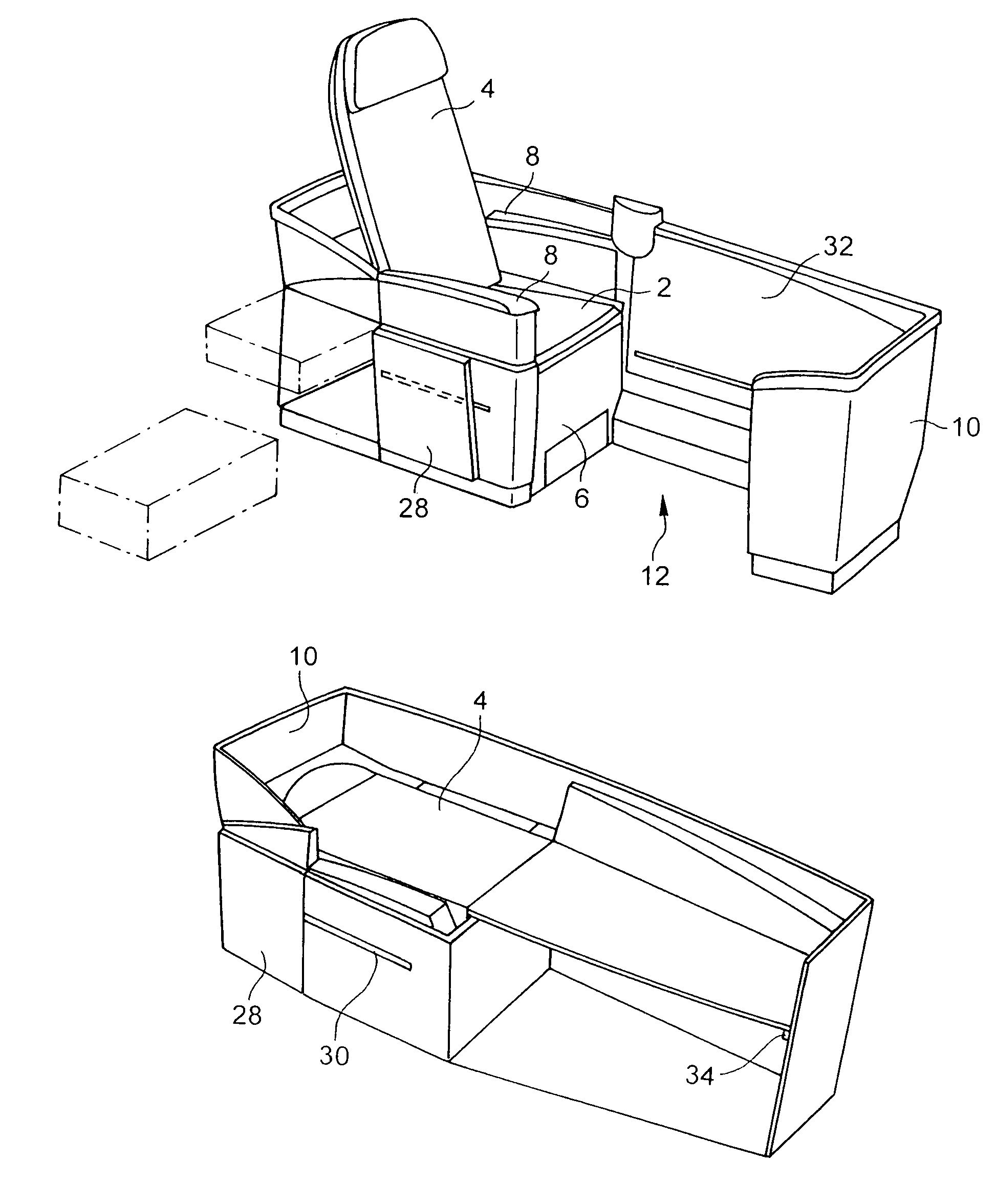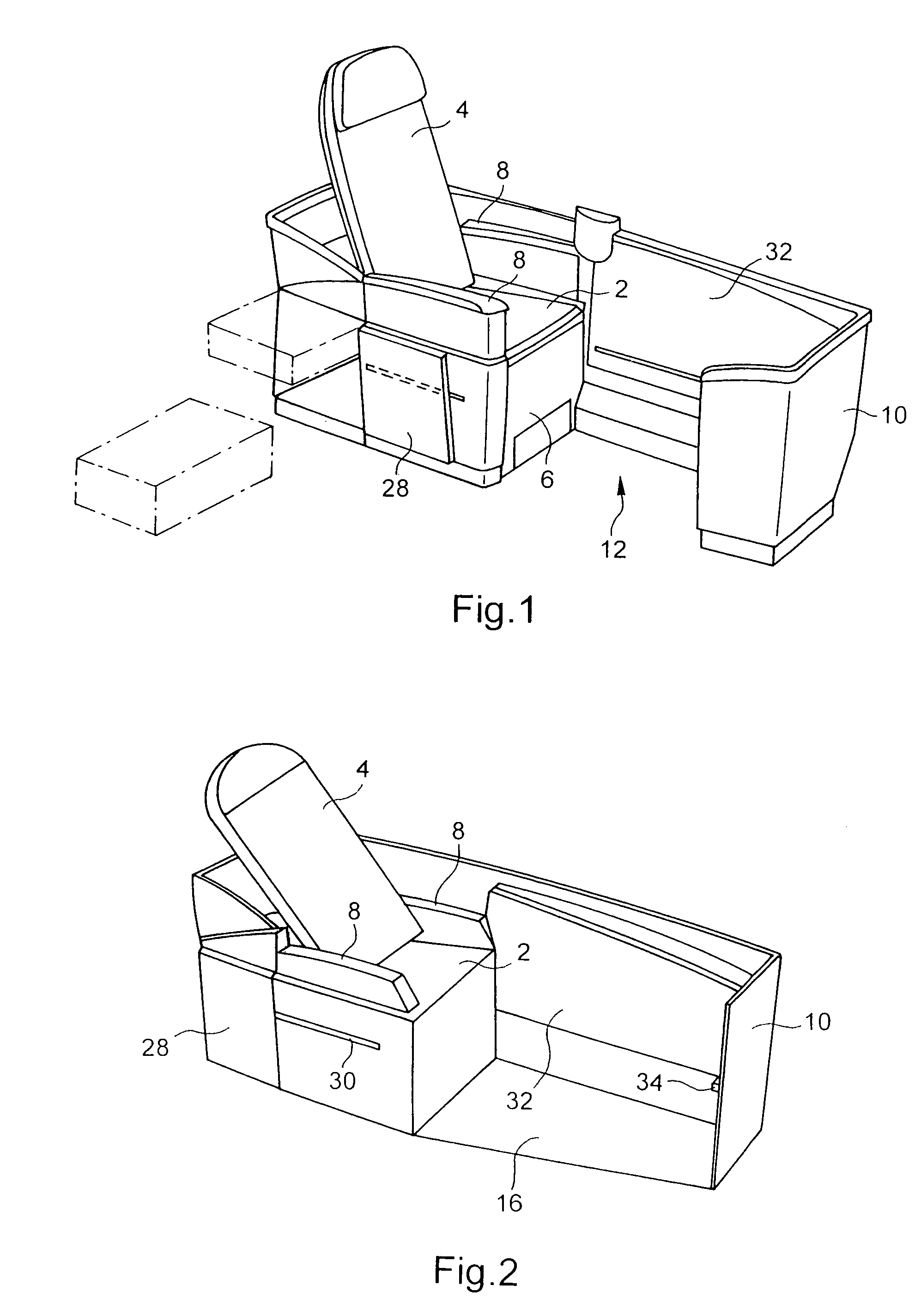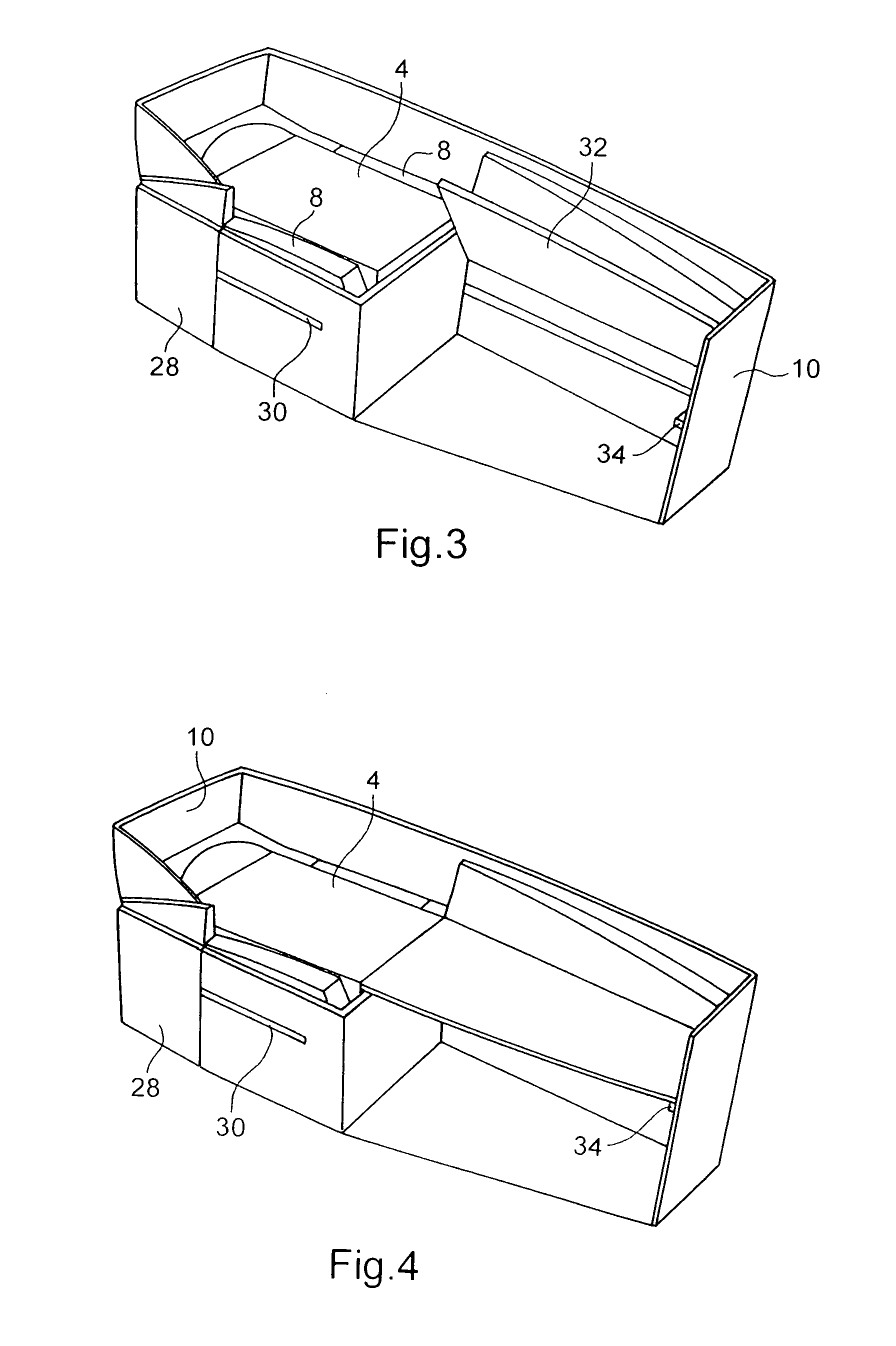Convertible seat for an aircraft passenger
a seat and passenger technology, applied in the field of convertible seats, can solve problems such as the addition of a large amount of weigh
- Summary
- Abstract
- Description
- Claims
- Application Information
AI Technical Summary
Benefits of technology
Problems solved by technology
Method used
Image
Examples
first embodiment
[0047]FIG. 1 shows a seat according to the invention. This seat comprises a sitting portion 2, a back 4 and a footrest 6. On each side of the sitting portion 2 there also is an armrest 8, in each case.
[0048]This seat is intended to accommodate an aircraft passenger and to be fastened on the floor of an aircraft cabin. This seat is more particularly intended for a first-class compartment of an aircraft or else possibly for a business-class compartment. Then to clearly define the space given to the passenger traveling in the seat, a wall 10 surrounds this space. It is understood that the seat is located within this space and an opening 12 implemented in the wall 10 allows access to the interior of this space and to the seat. This wall 10 has, for example, a height of approximately 80 cm, which corresponds more or less to the height of the armrests 8. Thus an individual seated in the seat can chat with a neighboring individual and be relatively well isolated from the other travelers wh...
fourth embodiment
[0079]In this fourth embodiment of a seat according to the invention, there also again is seen an additional berth 40. In original manner, this additional berth 40 is stored in the back 4. It has more or less the same length as the back 4 and a slightly lesser width.
[0080]The back 4 can be hollow, for example, and thus have a tubular rectangular section shape, possibly closed at the end opposite the base of the back 4. The additional berth 40 then is housed in the cavity of the back.
[0081]The back 4 also can have a U-shaped section. The base of the U forms the front surface of the back 4 when the latter is in turned-up position, that is, the surface against which the passenger leans when he is sitting in the seat. The two branches of the U then form a runner in which the additional berth 40 slides.
[0082]Once the additional berth 40 has been brought outside the back 4, it is advisable to position it at the same level as the back 4 by a translation of a few millimeters, or centimeters...
seventh embodiment
[0087]a seat according to the invention proposed here is developed, for example, from the preceding embodiment. In fact, there again is seen a similar back 4 guided by grooves 22 for the changeover into its horizontal position and the presence of a unit 36 facing the armchair.
[0088]The bedding surface comprises the back 4 brought into horizontal position and the upper portion of the unit 36. This does not suffice to accommodate a passenger in lying-down position and it is advisable to fill in the space between the back 4 in horizontal position and the unit 36. In this embodiment, the invention proposes using the footrest 6 as is done in standard manner in the convertible seats of the prior art, bringing this component of the armchair into a more or less horizontal position, as a continuation of the back 4. It also proposes dividing the upper portion of the unit into a fixed part and a flap 44 joined to the fixed part by means of a hinge, arranged on a transverse edge of the fixed pa...
PUM
 Login to View More
Login to View More Abstract
Description
Claims
Application Information
 Login to View More
Login to View More - R&D
- Intellectual Property
- Life Sciences
- Materials
- Tech Scout
- Unparalleled Data Quality
- Higher Quality Content
- 60% Fewer Hallucinations
Browse by: Latest US Patents, China's latest patents, Technical Efficacy Thesaurus, Application Domain, Technology Topic, Popular Technical Reports.
© 2025 PatSnap. All rights reserved.Legal|Privacy policy|Modern Slavery Act Transparency Statement|Sitemap|About US| Contact US: help@patsnap.com



